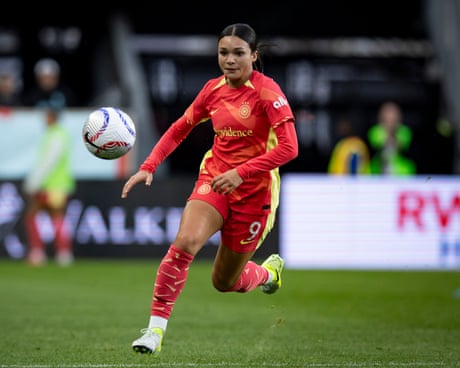
SALT LAKE CITY — André Tourigny runs a tough practice. Even on the eve of his club’s home opener, the coach assigns his players about an hour of line rushes and drills and scrimmages, plus a few extra strides for the losing side.
Despite the momentous occasion just a day away, it’s otherwise quiet at the Olympic Oval, where the Utah Hockey Club will hold practices in its first season. Across from the rink, recently downsized from the Olympic-sized slab that sat here in the spring, is a curling sheet, and bordering both is an Olympic speedskating track. Those surfaces are mostly empty on this Monday, though, and the sounds of skates carving ice and pucks bouncing off boards echo off the walls, hung with the Hockey Club’s icy blue banners, the intensity of this last off-season practice evident.
While this roster is not new, everything they’ve experienced over the course of this off-season has been. And as Tourigny gathers his team at centre ice, everyone here knows the historic game that awaits this squad Tuesday night in a brand-new hockey market that will be anything but quiet.
Less than a year ago, an NHL team in Salt Lake City was little more than an idea. Ryan and Ashley Smith had made known their desire to bring hockey to their home state, but the billionaire power couple at the heart of Utah’s sports and business scenes seemed to have only one avenue available: wait for the expansion process to open up. That all changed on April 18, when the NHL officially brokered a $1.2-billion deal to transfer Arizona’s hockey assets — every player, prospect, and member of the coaching staff and management team — to Smith Entertainment Group for the formation of a brand-new franchise.
Suddenly, what was expected to be a years-long marathon for the Smiths became a six-month sprint to get Salt Lake City ready for the 2024-25 campaign with the roster formerly called the Coyotes.
“Pretty much, we all got traded — all the staff and all the players,” says Erin Bilello, who spent four years as an executive assistant with Arizona and now holds the same position for the Utah Hockey Club. (The organization will unveil its permanent name and logo next year.)
Bilello remembers the day of the announcement well — one that marked the end of an era for hockey in the desert and the beginning of a new one about 1,100 kilometres due north in the shadows of the Wasatch Front. She was in the room as the Smiths first introduced themselves to their new organization following the approval of the transfer by the NHL’s Board of Governors. She recalls the emotions of that day — the sadness at the thought of leaving her home of four years, and the mix of relief and excitement upon seeing firsthand the Smiths’ vision for the team and what a future in Utah might look like.
Since her hiring to Bill Armstrong’s staff when he joined the Coyotes as general manager in 2020, Bilello’s role has seen her handle “everything off the ice” for the roster and staff. She serves as a liaison between the hockey operations and business operations departments and often works closely with players’ partners and spouses to make sure families’ needs are met.
Bilello laughs as she notes she can now add “moving expert” to her list of responsibilities after playing an instrumental role in the relocation of dozens of players and their families. But back in April, as she looked around that room of players and staff in Arizona, she hadn’t yet grasped what the coming months would bring. And as her focus shifted from the emotion of the situation to the logistical puzzle ahead, she was faced with a fairly daunting question:
“My mind immediately went into, ‘Oh my gosh, how are we moving all these people there?’”
Just a few hours after the Smiths’ first visit to Arizona in April, Bilello began planning the team’s first trip to their new home and the welcome party that awaited them there, with help from the administrative staff of the Utah Jazz. Her phone has barely stopped ringing since.
Among the first flurry of calls Bilello received in the early hours were several from Utah-based realtors looking to offer assistance, recommend neighbourhoods, and help guide this sudden influx of house-hunters. Scouting reports on listings soon circulated widely on the team’s group chat, making the search a true team effort.
“Definitely, the recommendations did not stop in the group message for many, many weeks,” says Bilello, adding that many colleagues and teammates wound up in neighbouring units. “If someone didn’t like an apartment building, we could be like, ‘Well, we don’t need to look at that one!’ Or, ‘Hey, we saw this house go up — it doesn’t fit our needs, but here’s the link.’”
Each player’s list of criteria was different — a condo in downtown Central City may fit the lifestyle of a 23-year-old bachelor and his dog, while a 32-year-old husband and father of two might prefer the pace and space of a house in a nearby suburb like Bountiful or Draper.
In addition to piles of administrative responsibilities, including processing about 65 new work visas — “because we’re a new entity, every single visa needed to be changed” — Bilello worked closely with administrative and support staff from the Jazz to compile a booklet for families with lists of everything they might need in their new city — from schools, daycares, and babysitters to pediatricians and family doctors, plus favourite restaurants and coffee shops, local parks, preferred hair salons, and the best places to shop.
All of these items are so often relegated to the status of minor details when we think about the life of a professional athlete, with everything on the ice taking centre stage. But they all play an important role in making new surroundings feel like home.
“That’s such a huge aspect of a player’s life: feeling that their family is comfortable. They value that their family feels welcome. They value that their family feels settled when they’re away on the road,” says Bilello, who notes that there are 13 kids under age five included among players’ families.
“It is no joke being a family member of a professional athlete,” she continues. “We have a lot of moms, and we have a lot of new moms, on this roster right now. So, just making sure that all of their needs are met and making sure that they feel part of this community. And Utah has really come out [to support the team]. I know guys are getting, like, muffins dropped off at their front doors. It’s been such a huge warm welcome for everyone.”
Chris Armstrong has seen the support firsthand, too.
“We can’t really go anywhere in the city — an Uber, coffee shop, or restaurant — without people showing their enthusiasm and being very gracious about how excited they are to, sort of, build this from the ground up with us,” says Armstrong, who was appointed Utah’s president of hockey operations in June.
Like Ryan Smith, Armstrong has long been a believer in Utah as a hockey market. The two became friends about a decade ago, and began exploring the idea of bringing the NHL to Utah shortly after the Smiths took ownership of the NBA’s Jazz and their home arena, the Delta Center. Once the Smiths made the NHL in Utah a reality, it didn’t take long for Armstrong, who spent the past 14 years with Wasserman, a top sports marketing and talent management company, to officially join the team.
From the first day of his Utah HC tenure, Armstrong has been intimately involved with building the brand of Utah hockey, starting with their inaugural season’s temporary logo and name — a design as intentional as it is simple, with its winter-themed colour scheme and clean lines.
“We’ve had great and really positive ongoing feedback as people have sort of digested and lived with this Utah Hockey Club identity, and we continue to get really positive feedback about the uniqueness of that,” he says. “I think as we play real games and our fans connect with our players with that identity, it’s even going to bring in more connection.”
Armstrong wants Utah to be at the heart of the team’s identity, something the Smiths have emphasized at every turn.
“It definitely feels like this is something that belongs to the state and to the community,” Ashley Smith told reporters on Monday. “So, we are just shepherds in that way.”
While chaotic at times, Bilello says the challenges of the past few months have brought the entire group of players and staff together.
“We all have such a common ground of, ‘Hey, we all went through this kind of crazy experience that pretty much no one else in the NHL can say they’ve done,’” says Bilello. “It has been such an unbelievable summer and a challenging summer and a rewarding summer, that I think, kind of, coming up to the first game will be unbelievable and a huge, memorable experience for all of us.”
Starting Tuesday night, they’ll welcome more than 11,000 more into the family as the Hockey Club makes its regular-season home debut at a sold-out Delta Center. (There are already plans in place to renovate the rink to expand its seating capacity to 17,000 within three years.)
Bilello expects Tuesday to be an emotional night for all involved.
“Each person on our team, each person on our roster, has worked so unbelievably hard this summer, on and off the ice,” she says. “A lot of us have unpacked boxes and repacked boxes — everyone needed to be all-hands-on-deck for this to come to fruition and for the guys to get on the ice.”
As Ryan Smith says, “there’s not really a playbook” for what the group has accomplished over the past five-and-a-half months. He makes it clear that his expectation for Season 1 isn’t perfection — there will be hurdles along the way as the team continues to learn on and off the ice. “The trajectory of this team, and where we’re at, it’s almost like we’re catching each other at the perfect moment,” he says of the symmetry between the rebuilding roster and the growing foundation around it. “In life, timing is everything and things are lining up to be pretty cool.”
Says Bilello, “I think the people of Utah are so deserving of a group that’s growing and becoming better and being not only great people on the ice, but great people off the ice.
“I’m excited for the people of Utah to be able to see that this season.”








